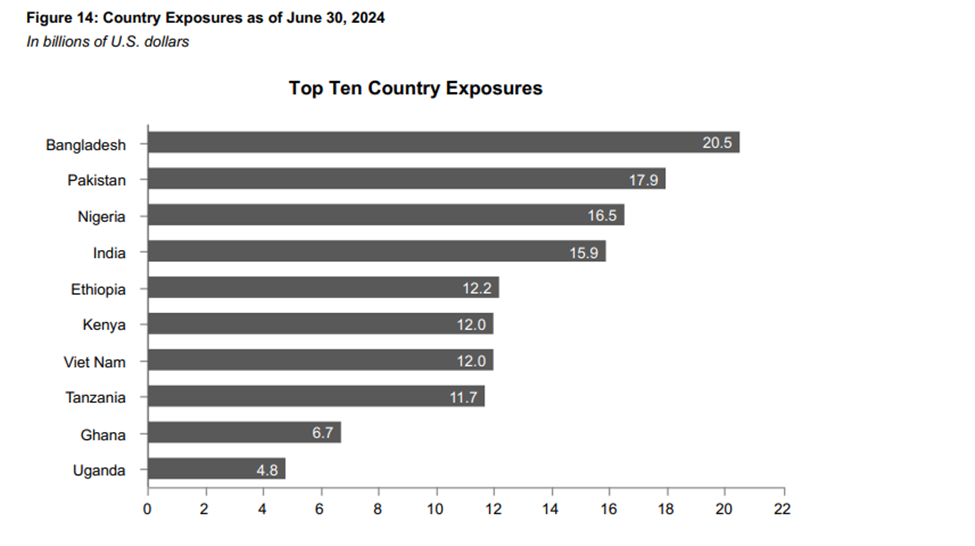Nigeria has ascended to the position of the third-largest debtor to the World Bank’s International Development Association (IDA) as of June 30, 2024. This marks a significant increase in the country’s borrowing from the institution, reflecting its growing reliance on international development financing.
Increase in IDA Debt Exposure
According to the World Bank’s financial statements, Nigeria’s debt to the IDA rose by 14.4%, climbing from $14.3 billion in the fiscal year (FY) of 2023 to $16.5 billion in FY2024. This $2.2 billion increase has elevated Nigeria into the top three IDA debtors for the first time, marking a shift from its previous position as the fourth-largest borrower in 2023.
The fiscal year for 2024, which runs from July 2023 to June 2024, indicates that at least $2.2 billion has been received by Nigeria under the administration of President Bola Tinubu. This debt accumulation showcases Nigeria’s strategic engagement with international financial institutions during a time of economic challenges.
Global IDA Debtor Rankings
While Nigeria’s debt exposure has surged, it remains behind Bangladesh and Pakistan in the global rankings. Bangladesh continues to lead as the largest IDA debtor, with its exposure rising from $19.3 billion in 2023 to $20.5 billion in 2024. Pakistan holds the second spot, maintaining its exposure at $17.9 billion.
India, which was the third-largest borrower in 2023 with $17.9 billion, saw its debt to the IDA decline to $15.9 billion in 2024. This reduction allowed Nigeria to surpass India and claim the third position in the IDA’s debtor list.

Other Major IDA Borrowers
Several other countries also represent significant portions of the IDA’s portfolio. Ethiopia’s exposure increased from $11.6 billion in 2023 to $12.2 billion in 2024, while Kenya and Vietnam both maintain debt levels at $12.0 billion for the fiscal year 2024. Together with Tanzania, Ghana, and Uganda, these nations form the top ten IDA debtors, collectively accounting for 63% of the IDA’s total exposure as of June 30, 2024.
Understanding the IDA’s Role
The International Development Association (IDA) is a key component of the World Bank’s operations, offering concessional loans and grants to the world’s poorest countries. These loans come with low interest rates and long repayment periods, designed to stimulate economic growth, reduce inequalities, and improve living standards in developing nations.
Nigeria’s Rising External Debt
As Nigeria’s borrowing from the IDA increases, concerns over the country’s rising external debt and servicing costs have also intensified. previously reported that Nigeria secured a total of $4.95 billion in loans from the World Bank under Tinubu’s administration. However, Nigeria has only received about 16% of these new loans to date.
The World Bank is expected to approve four additional loan projects worth $2 billion for Nigeria this year. Data from the Debt Management Office (DMO) shows that, as of March 31, 2024, Nigeria’s total debt to the World Bank stood at $15.59 billion, underscoring the country’s growing dependence on international financial support.
What’s Next?
With Nigeria now firmly established as one of the largest IDA debtors, questions about the long-term sustainability of this debt remain. As the country continues to secure international funding, efforts to manage external debt servicing costs and drive economic recovery will be crucial in ensuring these loans translate into tangible development outcomes.
Source: Nairametrics


















